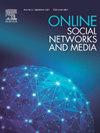BotSSCL: Social Bot Detection with Self-Supervised Contrastive Learning
IF 2.9
Q1 Social Sciences
引用次数: 0
Abstract
The detection of automated accounts, also known as “social bots”, has been an important concern for online social networks (OSNs). While several methods have been proposed for detecting social bots, significant research gaps remain. First, current models exhibit limitations in detecting sophisticated bots that aim to mimic genuine OSN users. Second, these methods often rely on simplistic profile features, which are susceptible to adversarial manipulation. In addition, these models lack generalizability, resulting in subpar performance when trained on one dataset and tested on another.
To address these challenges, we propose a framework for social Bot detection with Self-Supervised Contrastive Learning (BotSSCL). Our framework leverages contrastive learning to distinguish between social bots and humans in the embedding space to improve linear separability. The high-level representations derived by BotSSCL enhance its resilience to variations in data distribution and ensure generalizability. We evaluate BotSSCL’s robustness against adversarial attempts to manipulate bot accounts to evade detection. Experiments on two datasets featuring sophisticated bots demonstrate that BotSSCL outperforms other supervised, unsupervised, and self-supervised baseline methods. We achieve and higher (F1) performance than SOTA on both datasets. In addition, BotSSCL also achieves 67% F1 when trained on one dataset and tested with another, demonstrating its generalizability under cross-botnet evaluation. Lastly, under adversarial evasion attack, BotSSCL shows increased complexity for the adversary and only allows 4% success to the adversary in evading detection. The code is available at https://github.com/code4thispaper/BotSSCL.
BotSSCL:基于自监督对比学习的社交机器人检测
自动账户(也被称为“社交机器人”)的检测一直是在线社交网络(OSNs)关注的一个重要问题。虽然已经提出了几种检测社交机器人的方法,但仍然存在重大的研究空白。首先,目前的模型在检测旨在模仿真正OSN用户的复杂机器人方面表现出局限性。其次,这些方法通常依赖于简单的轮廓特征,容易受到对抗性操纵。此外,这些模型缺乏泛化性,导致在一个数据集上训练和在另一个数据集上测试时性能欠佳。为了解决这些挑战,我们提出了一个基于自监督对比学习(BotSSCL)的社交机器人检测框架。我们的框架利用对比学习来区分嵌入空间中的社交机器人和人类,以提高线性可分性。由BotSSCL衍生的高级表示增强了其对数据分布变化的弹性,并确保了其通用性。我们评估了BotSSCL对操纵bot账户以逃避检测的对抗性尝试的鲁棒性。在两个具有复杂机器人的数据集上的实验表明,BotSSCL优于其他有监督、无监督和自监督基线方法。我们在两个数据集上的性能都比SOTA高≈6%和≈8% (F1)。此外,BotSSCL在一个数据集上训练并在另一个数据集上测试时也达到了67%的F1,证明了其在跨僵尸网络评估下的泛化性。最后,在对抗性逃避攻击下,BotSSCL显示出对手增加的复杂性,并且只允许对手成功逃避检测。代码可在https://github.com/code4thispaper/BotSSCL上获得。
本文章由计算机程序翻译,如有差异,请以英文原文为准。
求助全文
约1分钟内获得全文
求助全文
来源期刊

Online Social Networks and Media
Social Sciences-Communication
CiteScore
10.60
自引率
0.00%
发文量
32
审稿时长
44 days
 求助内容:
求助内容: 应助结果提醒方式:
应助结果提醒方式:


